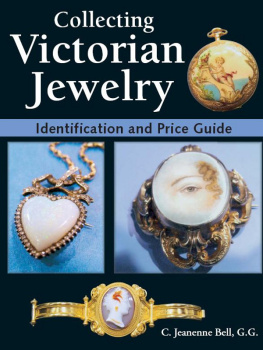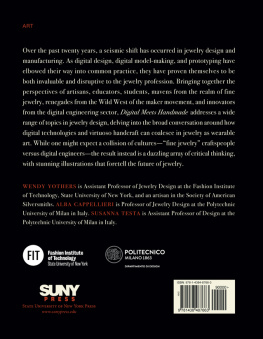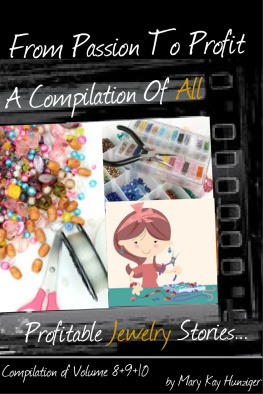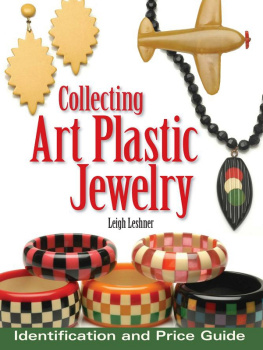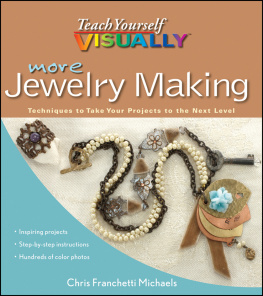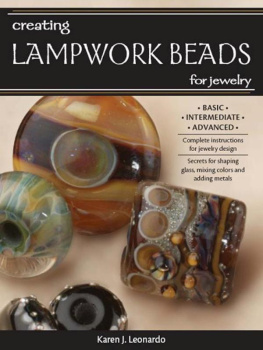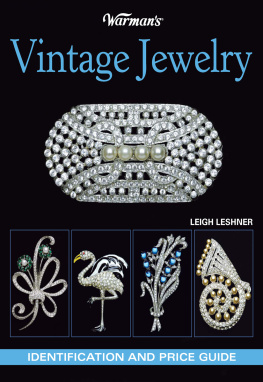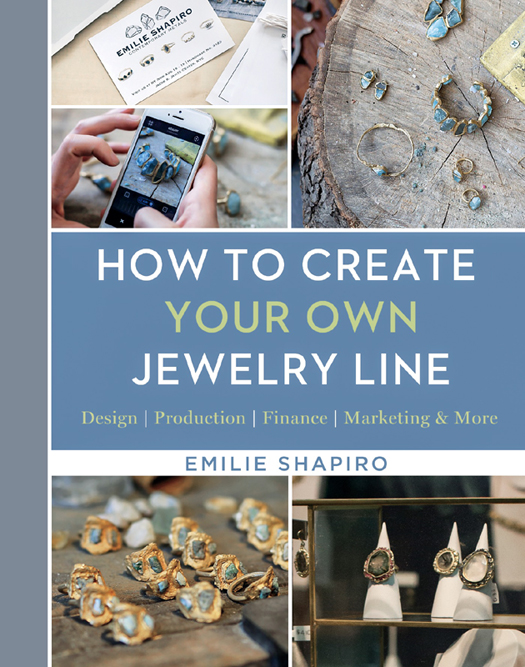LARK CRAFTS and the distinctive Lark logo are registered trademarks of Sterling Publishing Co., Inc.
All rights reserved. No part of this publication may be reproduced, stored in a retrieval system, or transmitted in any form or by any means (including electronic, mechanical, photocopying, recording, or otherwise) without prior written permission from the publisher.
For information about custom editions, special sales, and premium and corporate purchases, please contact Sterling Special Sales at 800-805-5489 or .
Introduction
Over the years, thousands of students have attended classes Ive taught, hoping to learn jewelry production, mostly so they can start their own jewelry line. After some research, I was surprised to find that there was a scarcity of resources on this topic. Students could pick up only bits and pieces of information here and there about how to market their jewelry, but most people just didnt know where to start or how to make a big push.
I have found the majority of people in the jewelry industryand most industriesto be very secretive when it comes to sharing trade insights, contacts, best practices, and trials and errors of their own path. After getting loads of questions about this from my students, I decided to teach a lecture-style class about jewelry production. The response was overwhelming.
Through years of experience holding many different jobs in diverse facets of the jewelry industry, I have learned from my mistakes and accomplishments and have applied all those lessons to building my own company. In writing this book, my goal is to share the insights I have gained with aspiring designers to help them become successful jewelry designers and business owners. I am extremely proud to be writing this book, and to make this information available to a large audience.
I have always had a knack for design and business, but it took me many years to develop the skills and the patience of a craftsperson. From my earliest days, I was interested in designing and creating things. My father worked in sales at a fabric mill in New York Citys garment district, so fabric samples in all sorts of patterns were always available in my playroom. I have fond memories of wandering the sample floor high above Eighth Avenue and learning about color and texture. When I was five, I loved designing and making clothes for my dolls. Using my (not-so) safety scissors, I would cut up my fabric to make outfits for my dolls.
I made my first piece of jewelry when I was thirteen and havent stopped since then. After my grandmother passed away, I found a bag of her costume jewelry. I was always fascinated by how things were made, so I started taking apart my grandmothers necklaces, bracelets, and brooches and putting them back together in a new way. Focusing on design, rather than construction, I haphazardly assembled my own pieces, but they always fell apart. When I was in high school, I started selling my jewelry to friends, family, and the people who would watch me make it while I was working at a local beach club. My designs were strong, but the craftsmanship was weak.
Running a jewelry production business is different from being an artist. An artist can focus solely on design and aesthetics. A jewelry entrepreneur must be concerned about the customers satisfaction after the purchase. Youre looking to create a piece that will be cherished and passed down from generation to generation.
I didnt learn this until many years later, but it takes time to hone your craft. It calls for a lifetime of research, discipline, trial and error, and learning from your mistakes. Certain things come naturally to each of us, and certain things have to be learned. Design and business were always strong suits for me. I knew two things: I wanted to be my own boss and I wanted to make original pieces that would be treasured for years to come.
Since I was interested in accessories, I enrolled in Syracuse University to pursue a career in fashion design. In the first semester of my freshman year, I almost failed my Sewing 101 class because I didnt follow the patterns and didnt care what my seams looked like. Again, my stuff looked cool but didnt last. At this point, I was selling my jewelry designs out of my dorm room, when a professor suggested I take a metalsmithing class. To me, metalsmithing sounded like a genre of music, one that scared the classic rock lover in me. I can still remember the smell of the studio on my first day of class. I felt like I was home and was connected with something, but didnt know why. With every skill and technique I learned, I grew more and more excited. My mind always knew where I wanted to go and what I wanted to make, but I didnt yet have the skill set to pull it off.
I loved working with metal because you could see the effort you put into it in the final product; there was no hiding in metal. In true Emilie fashion, I never cared if my solder seams were perfect or my edges were filed nicely. In fact, I dont remember ever polishing my work while in school. I was so focused on starting a business that I would sell all my projects from class. I never understood why my professors encouraged me to perfect my craft first and then start a business.
When I was nineteen, I boarded a plane to Florence, Italy, with an overpacked suitcase filled with sandals, sundresses, and my jewelers saw. I had nothing more than an address on a sticky note to tell me where to go when the plane landed. I had been accepted into an independent study program at Alchimia, a well-known contemporary jewelry school just outside of Florence, in an artists and young professionals neighborhood called San Frediano. I remember getting out of the taxicab on via de Burchiello and ringing the bell of a three-story row house, hoping I was in the right place. I met my summer roommates, and, to my surprise, they were all jewelry students. In fact, almost everyone who lived in my building was a jeweller. At Syracuse University, there were just five people in my major. The year I graduated, there was only one other girl who had majored in metalsmithing. I would tell fellow students that I was a metalsmithing major, and they just assumed I made knives and brass knuckles.
On my first day of class at Alchimia, we didnt even touch a piece of metal. In fact, I dont think I worked with metal the entire time I was there. We talked about the idea of jewelry and the concepts behind our work. We designed pieces to entice our senses, not to look pretty. We talked about materials, and what would happen if you mixed sea salt with resin (it never cured, and I made a huge mess). What I learned while I was studying in Florence was how far I could push myselfnot just physically, but mentally, too. When you create something and put something into the world, youre infusing it with meaning. I learned to think beyond the traditional techniques, to experiment with materials. I learned to problem solveto come up with a design and figure out how to make it. And to make it well. I made more pieces that summer than I had in the previous two years of college.
Looking back, that summer in Italy was a turning point in my life and my career. Alchimia had taught me to take pride in good craftsmanship and understand that I had a lot more to learn before I could sell my work. After I graduated from college, I took an internship on the jewelers bench with Pamela Love Jewelry, a young designer who already had a cult following for her edgy jewelry inspired by botany, astrology, and astronomy. During my time there as a bench jeweler, I did the same thing every dayclean castings, cut, grind, sand, polish, repeat. As monotonous as it sounds, I really honed my skills there. Doing the same thing every day, you build muscle memory and strength, and train your hands to become fine-tuned instruments. I remember thinking, for the first time, that my hands knew what to do without my even thinking about it. I was amazed by how much work we were producing every day.



